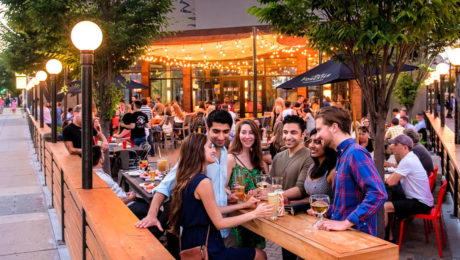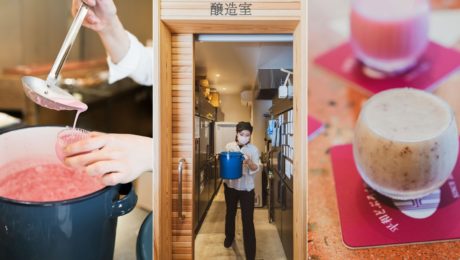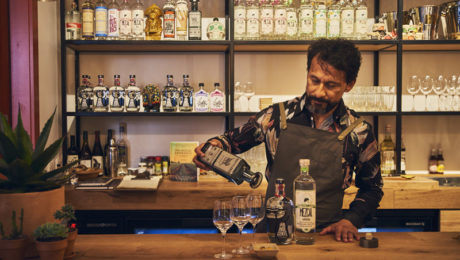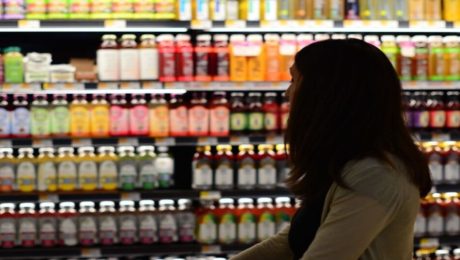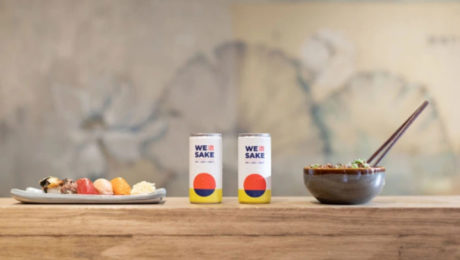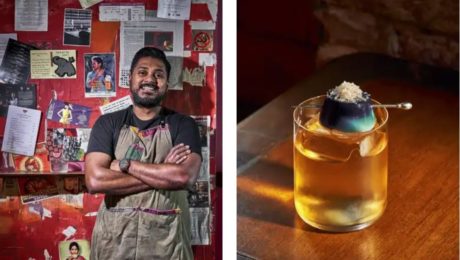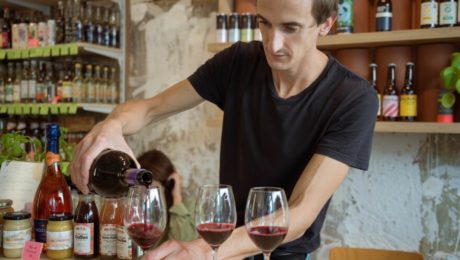Food and Beverage Laws Passed in 2022, Part 2
Evident of the desire to help local businesses bounce back from the pandemic, the remainder of food legislation passed in 2022 was aimed at helping businesses — especially brewers. Outdated alcohol beverage laws revamped in many states and many cottage food producers can sell homemade food with less restrictions.
In our last newsletter, we shared the food and beverage laws passed in the first half of the United States in 2022. The list below completes the balance of the country — Massachusetts to Wyoming.
Michigan
HB4232 — Aids small businesses in filling labor shortages in restaurants by expanding eligible workforce to allow 17-year-olds to waitstaff to sell and serve alcohol.
HB5695 — Amends Michigan Liquor Control Code to allow a minor employee who is at least 16 years old to build a display of certain brands of alcohol, mark the price on those brands, rotate them and place them on shelves.
HB5696 — Amends the Youth Employment Standards Act to allow a minor to be issued a work permit for employment with an establishment where alcoholic beverages are distributed.
HB5744 — Codifies the licensure and regulation of certain persons engaged in processing, manufacturing, production, packing, preparing, repacking, canning, preserving, freezing, fabricating, storing, selling, serving, or offering for sale food or drink for human consumption;
HB5747 — Allows for a certificate of free sale from the Michigan Department of Agriculture and Rural Development (MDARD) for milk and dairy products.
HB6105 — Allows alcohol wholesalers to distribute non-alcoholic beverages to retailers and allows use of electronic coupons under certain circumstances.
HB6106 — Allows wineries and breweries to make and sell private label products.
HB5984 — Allows the consumption and service of food, beverages and alcohol in public swimming pools.
SB656 — An act to create a commission for the control of the alcoholic beverage traffic within this state.
Minnesota
HB918 — Creates a Food Truck Permit under the local alcoholic beverage control law, allowing food truck vendors to sell alcoholic beverages.
SB2844 — Provides funding to construct the Mississippi Alcoholic Beverage Control Warehouse.
SB3008 — Makes several changes to Minnesota’s liquor laws. Known as the “Free the Growler” bill, the new law raises the cap on growler sales. It also allows more off-sale options for smaller breweries and expands license opportunities for specific cities and events.
Mississippi
HB684 — The state’s Small Business and Grocer Investment Act. Develops quality retail food outlets for jobs, expands markets for Mississippi farmers, supports economic vitality in underserved communities. Increases access to retail food outlets that sell fresh and healthy food. Provides a dedicated source of financing for healthy food retailers in Mississippi.
HB1135 — Allows home delivery of alcoholic beverages from licensed retailers.
SB3015 — Earmarks funds for the State Department of Agriculture and Commerce, including costs of the Farmers Central Market.
Missouri
HB1697 — Allows cottage food producers to sell food over the internet. Removes the $50,000 annual sales limit for cottage food producers.
New Hampshire
HB314 — Raises the maximum annual gross sales of food by a homestead or cottage food operation from $20,000 to $35,000.
HB1039 — Amends alcohol law, allowing beverage manufacturers to sell beers made on-site to state-based wholesalers.
HB1584 — Establishes a capital improvement grant program for the benefit of state fairs and agricultural fairs.
SB17 — Allows dogs in outdoor dining areas.
SB212 — Lowers liquor license fee to $300 (from $1,692) for brewers selling less than 1,000 cases of liquor per year.
New Jersey
AB462 — Permits pedicabs to operate while passengers are consuming alcoholic beverages.
AB3991 — Exempts raw, unprocessed honey from the health department’s cottage food regulations.
New York
AB2344 — Requires food service establishments to post food allergens at restaurants and in food ordering services.
AB3954 — Establishes New York State Council on Food Policy. Establishes policies to help New Yorkers avoid food insecurity and eat as much New York-grown and produced food as possible. Supports growth of a New York-based local farm and food product economy to revitalize rural, suburban and urban farms.
AB8620 — Authorizes a licensee to sell wine for consumption on the premises to also include the sale and consumption of shochu (Japanese alcoholic beverage).
AB10176 — Allows alcohol license holders to sell liquor at off-premise catering establishments.
SB771 — Amends the Nourish New York program to define products as those grown, produced, harvested, butchered, canned or freezed in New York.
SB5438 — Amends alcohol beverage control law to authorize tastings at licensed premises by distillers.
SB7655 — Amends the definition of New York State-labeled beer to require that at least 60%, by weight, of its hops and at least 60% of any other ingredients are grown in New York.
SB7823 — Creates an advisory group which will produce a report on improving urban and rural consumer access to locally produced, healthy foods.
SB8989 — Authorizes the manufacture of beer, spirits, cider, wine and mead at the Culinary Institute of America.
SB9093 — Amends alcohol beverage control law to allow parcels of land to the list of premises which are exempt from the law’s provisions. Restricts manufacturers/wholesalers and retailers from sharing an interest in a liquor license.
SB9385 — Amends alcohol beverage control law to allow a restaurant located within 200 feet of a school to serve alcohol.
North Carolina
HB768 — The 2022 ABC Omnibus, decreases regulations on bar owners and expands the freedom of alcohol sales and transportations. Eliminates the $1 membership requirement for people at visiting private bars.
SB762 — North Carolina Farm Act of 2022.
Ohio
HB629 — Increases microdistillery production limits and allows spirituous liquor tasting samples at agency stores free of charge.
SB102 — Modifies Ohio’s liquor laws. Eases restrictions on local homebrewers and fermenters, exempting them from certain liquor law permits. Allows homebrewers to make beer or wine without a liquor permit, serving it on private property for personal consumption. Homebrewers cannot sell homemade beer or wine. Permits a person under the age of 18 to handle beer and liquor at a hotel, bar or restaurant. Eliminates provision that more than 30% of a restaurant gift card could not be used to purchase alcohol. Authorizes a retail liquor permit holder to sell beer or liquor on Sunday. Allows charitable or political organizations to give away beer or liquor as a prize at a raffle or auction.
Oklahoma
SB269 — Allows a mixed-beverage licensee selling wine, beer or cocktails to-go to provide a different price than they do for drinks that are served on premises.
SB757 — Allows for small brewer and small farm wineries to deliver alcohol.
Pennsylvania
HB1615 — Allows breweries to sell malt or brewers beverages to non-licensees and licensees that also sell malt or brewers beverages. Allows all liquor license holders to offer amplified sound in their establishment (previously only allowed for wineries).
Rhode Island
HB7095 — Part of the “Take It Outside” campaign, allows restaurants to continue approved outdoor dining, which was originally approved only for the pandemic. Extends moratorium on municipal enforcement of outdoor dining requirements.
HB7209 — Eliminates sunset date on the law that allowed takeout drinks. The new law now permanently allows Class B liquor license holders and brewpubs to sell distilled spirits with takeout orders.
HB7438 — The Toxic Packaging Reduction Act, prohibits food packaging with PFAS intentionally added in any amount from being manufactured, knowingly sold or distributed in Rhode Island, as of Jan. 1, 2024.
South Dakota
HB1322 — Expands definition of cottage food to include all shelf-stable foods, and even some foods requiring refrigeration, provided the seller completes regular food-safety training. Cottage food producers will still be required to label items with a product name, the name of the producer and a disclaimer that it wasn’t produced in a commercial kitchen.
SB101 — Allows any person 19 years or older, who is certified by a nationally recognized alcohol management program, to draw, pour, mix, serve and sell alcoholic beverages if the licensee is at least 21 years of age and on the premise when the alcohol is being served.
SB188 — Allows for unlicensed businesses to store alcoholic beverages.
Tennessee
HB1688 — Creates a common carrier license to be issued by the alcoholic beverage commission to a person or corporation that transports alcoholic beverages for a fee.
SB693 — Enacts the Tennessee Food Freedom Act, specifying circumstances when persons may sell certain homemade food products. Allows people to sell shelf-stable food products without a license, as long as they don’t require temperature control.
SB2270 — Authorizes a special occasion license to designate an area in which liquor-by-the-drink licensees may sell alcoholic beverages and beer to patrons who may consume the alcoholic beverages and beer anywhere in the designated area. Authorizes a festival operator licensee to provide a list of the liquor-by-the-drink licensees that will sell alcoholic beverages and beer to patrons in the designated area of the festival.
Utah
HB142 — Allows wild game to be donated to food banks and charitable organizations.
Virginia
HB426 — Creates a third-party delivery license that authorizes the licensee to deliver alcoholic beverages purchased by consumers from other retail licensees.
HB837 — Requires any food manufacturer, food storage warehouse, and retail food establishment to obtain a permit from the Commissioner of Agriculture and Consumer Services prior to operating.
HB1336 — Convenes a working group from representatives of the state’s alcoholic beverage control authority, Virginia Wineries Association, the Virginia Wine Wholesalers Association, the Virginia Beer Wholesalers Association, and the Virginia Craft Brewers Guild and other relevant stakeholders to address various needs, including evaluating the number of barrels of beer allowed under a license and reviewing distributing through the Virginia Winery Distribution Company.
SB146 — Guarantees that State Board of Health regulations should not require an establishment that only sells prepared foods to have a certified food protection manager on site during all hours of operation.
SB315 — Increases the amount of alcoholic beverages that can be transported through the state from one gallon to three gallons.
SB519 — Authorizes sale and service of alcoholic beverages for casinos.
Washington
HB1145 — Allows non-wood, renewable fiber in 2 recycled content paper carryout bags.
HB1359 — In light of the ongoing Covid-19 pandemic, reduces liquor licensing fees temporarily.
SB5619 — Conserves and restores kelp forests and eelgrass meadows in Washington State.
- Published in Business
Can Wine Industry Court Younger Audience?
“The American Wine Industry Has an Old People Problem,” reads the headline from the New York Times. The article dives into the challenge highlighted by a new report: winemakers are missing younger consumers. The biggest growth area is among 70- to 80-year-olds.
“It’s worse than I thought,” Mr. McMillan said in a phone interview. “I thought we would have made some progress with under-60s. I’ve been talking about this problem for seven years and we still haven’t reacted.”
Younger consumers have a plethora of trending alcoholic drinks to choose from, much more than baby boomers. Craft beers, hard kombucha, hard seltzers and canabis-infused cocktails all compete with wine.
Rob McMillan, executive vice president of Silicon Valley Bank and author of the State of the U.S. Wine Industry 2023 report, says he believes wine’s downfall is a marketing problem. His tips:
- Emphasize social responsibility with the environmental sustainability of wine
- Embrace health awareness with ingredient labeling and transparent nutrition
- More introductory wines, like wine coolers, wines mixed with carbonated water and sold in cans, wines sold in smaller bottles
- More advertising and promotion targeted to a younger audience
Read more (New York Times)
- Published in Business
Could Primeval Sake Variety Revive the Drink?
As Japanese consumers continue to swap beer, wine and cocktails over sake, the country’s national drink, industry experts think the doburoku sake variety could revive the dwindling sake market.
Doburoku is the catch-all term for sake that is unfiltered and gently carbonated. Described as rustic, cloudy and soupy, the drink’s brewing process doesn’t follow traditional sake rules. Brewers experiment with flavors, making it sweet or savory. It’s a “hyperlocal expression of soil and culture is its trademark,” reads an article on digital beverage publication Punch. Doburoku is typically unpasteurized, brewed in small batches.
There are only around 200 doburoku brewers in Japan, many who are farmers running small inns and restaurants. Only about two dozen of Japan’s 1,500 sake brewers make doburoku.
“At Heiwa Doburoku Kabutocho Brewery, the drink comes plain or aged, but also with unusual variations: dry-hopped, infused with matcha, mashed with persimmons, or blended with azuki beans, in part to tone down the alcoholic sharpness that many among sake’s detractors find off-putting,” continues the article. After fermenting the rice, koji and yeast for about two weeks, most of Heiwa’s doburoku is made in 7-liter pots in a backroom of the bar.
Norimasa Yamamoto, Heiwa Shuzou’s fourth-generation president, hopes to generate interest in sake by putting a “modern spin on the old-fashionred drink. …I’m hoping that, once you’ve tried doburoku, you’ll become curious enough about our rice fermentation tradition to delve into sake,” he says.
Read more (Punch)
- Published in Business, Food & Flavor
Mezcal “Like Kissing Mother Earth”
Edmundo Farrera describes the taste of mezcal as a complex experience: “First you taste the valley where the agave plant was grown, next the earth it came from, and then on to taste the cosmos and time.”
The Veracruz, Mexico native who opened New Zealand’s first mezcal bar says each sip of a great mezcal is “so beautiful and powerful, like pyrotechnics exploding on my palate.”
An ancient drink that dates back to the Aztecs, they agave was eaten and used in ceremonies. Mezcal came about after the colonization in Mexico by Spainards. They brought Filipino slaves with them, who shared distillation techniques with the Aztecas.
Farrera says mezcal has long been popular in America but only recently it’s becoming more popular globally. American foods and sommeliers, he notes “are fascinated, even more than us, with these agave spirits. They get into it, they study it, a good percentage of American sommeliers, like with wine, can recognise different species of agave in a blind tasting of mezcal.”
He advises “a real mezcal drinker will never touch a cocktail.” Mezcal should be enjoyed sip-by-sip, he says, with the first sip awakening the palate and the second sip experiencing the multi-dimensional taste.
Read more (Stuff)
- Published in Uncategorized
Lawsuit Alleges Kombucha Exceeds Alcohol Limit
Four consumers — three underage — filed a lawsuit alleging Tribucha Inc. misled them into buying non-alcoholic kombucha that contains twice the alcohol permitted for non-alcoholic beverages.
The 30-page class action lawsuit contends Tribucha has been sold to “unsuspecting children, pregnant women, persons suffering with alcohol dependence issues, and a host of other people for whom alcoholic consumption may pose a grave and immediate safety and/or health risk.” The lawsuit says the North Carolina-based brand has a small disclaimer on the label stating that Tribucha “contains a trace amount of alcohol,” but an investigation proved otherwise. Plaintiffs used a lab accredited by the Alcohol and Tobacco Tax and Trade Bureau (TTB) to test the kombucha and found it is over 0.5% alcohol by volume, which classifies it as alcoholic.
The complaint continues: “Because Tribucha Kombucha does not include any warnings concerning the significant presence of alcohol, consumers, including Plaintiffs, are led to believe that the products are safe to consume when driving a car, operating machinery, and taking with potentially a deadly cocktail of incompatible medications.”
In 2010, Whole Foods and other retailers pulled kombucha off shelves as the TTB investigated whether alcohol levels in kombucha were higher than what was printed on the label. And since then, consumers — and even other brands — have filed lawsuits against various kombucha brands, alleging alcohol levels higher than indicated.
Kombucha can keep fermenting after it’s made, as the yeasts continue to eat sugars. Under current law, if kombucha leaves a processing facility at 0.4% ABV, but increases to over 0.5% by the time it’s placed on grocery store shelves, the brewer would have to pay federal alcohol taxes like a beer brand.
Kombucha producers fear constant repercussions from this law, says Hannah Crum, co-founder and president of Kombucha Brewers International (KBI), the trade organization for kombucha brewers.
Earlier this year, South Carolina’s Department of Revenue (DOR) categorized all kombuchas as alcoholic beverages. The state’s regulations set a maximum alcohol content for beverages but no minimum, so any fermented beverage with any alcohol content would be considered alcoholic. Since kombucha fermentation produces a trace amount of alcohol, a brewer would need to apply for a state alcohol license, and kombucha could not be sold to anyone under the age of 21. It contradicted the U.S. legal definition of an alcoholic beverage.
After kombucha industry leaders contacted the state’s DOR and the South Carolina Retail Association (SCRA) to share advice and resources, the regulation was amended to exempt kombucha. KBI’s leadership and legal counsel, along with producers Buchi Kombucha, GT’s Synergy Kombucha, Health Ade, Humm and Brew Dr. were involved.
Pending in Congress is the KOMBUCHA Act, legislation that would make kombucha beverages exempt from excise taxes intended for alcoholic beverages. The act proposes to raise the alcohol by volume (ABV) threshold for kombucha from its current level of 0.5% to 1.25%.
Reads a statement from KBI on the act: “These laws were never intended to make kombucha subject to taxes designated for beer. Passing the KOMBUCHA Act under the next appropriations bill will relieve this unnecessary burden on kombucha brewers. Only kombucha above that level (1.25%) will be subject to federal excise taxes when this Act becomes law.”
KBI has actively lobbied for the bill’s passage. Big kombucha brands (GT’s and Health-Ade) have actively supported the bill.
- Published in Business
Using Genomics to Improve Beer
A group of Belgian scientists have not only identified the gene responsible for much of the flavor of beer and other alcoholic beverages, they’ve also engineered it for brewers.
By screening large numbers of yeast strains, researchers were able to identify the genes responsible for beer’s flavor.
“To our surprise, we identified a single mutation in the MDS3 gene, which codes for a regulator apparently involved in production of isoamyl acetate, the source of the banana-like flavor that was responsible for most of the pressure tolerance in this specific yeast strain,” said Johan Thevelein, Ph.D., an emeritus professor of Molecular Cell Biology at Katholieke Universiteit, and one of the researchers. His team pioneered the technology that identifies the genes responsible for commercially important traits in yeast.
Important to the study was finding the gene successful at creating flavor on a commercial scale. Modern, large-scale beer brewers use tall, cylindrical fermentation tanks compared to the traditional shorter vats. While the taller tanks are easier for brewing, it negatively impacts the beer’s taste. That’s because, when beer ferments, the yeast coverts 50% of the sugar in the mash to ethanol and the other 50% to carbon dioxide. But carbon dioxide pressurizes in the modern closed vessels, dampening flavor.
Using the gene editing technology CRISPR/Cas9, Thevelein and his team were able to engineer the MDS3 gene for other brewing strains, improving their tolerance of carbon dioxide pressure and improving the flavor.
“That demonstrated the scientific relevance of our findings, and their commercial potential,” Thevelein added in a statement.
“The mutation is the first insight into understanding the mechanism by which high carbon dioxide pressure may compromise beer flavor production,” said Thevelein, who noted that the MDS3 protein is likely a component of an important regulatory pathway that may play a role in carbon dioxide inhibition of banana flavor production, adding, “how it does that is not clear.”
The technology has also been successful in identifying genetic elements important for rose flavor production by yeast in alcoholic drinks, as well as other commercially important traits, such as glycerol production and thermotolerance.
The results of their study were published in Applied and Environmental Biology, the journal for the American Society for Microbiology.
- Published in Science
Is the Future of Sake Canned?
Despite dedicated U.S. sake programs and educated American sommeliers, sake has been a harder sell in U.S. Federal regulations have never been able to properly define the drink. It’s taxed as a beer, but regulated as a wine. Education is a big issue. Many Americans think sake is a wine, causing them to drink too much of it and feel sick. Sake is brewed from fermented rice, making it similar to a beer.
“There’s a learning curve, but there’s also a bit of a cultural barrier. Sake can come across the way wine can — this very sophisticated product that’s expensive and that’s a bit esoteric, like you can’t really appreciate it unless you know all the nomenclature,” says Weston Konishi, president of the Sake Brewers Association of North America. “And then there’s the fact that Japanese sake tends to be labeled in Japanese, which most Americans can’t read. That’s been something of a barrier.”
Now more sake brewers are putting their sake in cans, making easy-to-purchase, grab-and-go options. It’s cheaper, too, at $5 a can versus $30 for a bottle.
“There’s something less intimidating about a can versus a bottle — that’s one advantage to canning sake. It’s not so erudite and out of reach,” says Konishi.
Inside Hook highlights six brands selling sake in cans.
Read more (Inside Hook)
- Published in Business
Local Flavors Drive Singapore’s Growing Craft Cocktail Scene
Fifteen years ago, Singapore’s craft cocktail scene was nonexistent. The few existing cocktail bars served beer and whisky. Today, Singapore is filled with world-class venues serving unique drinks that highlight the regional ingredients and culture of the southeast Asian metropolis.
The National Geographic explores “the city-state’s roster of award-winning drinking dens includes stellar hotel bars, sleek speakeasies and reimagined Chinatown shophouses.”
Creative drinks include those served by Nutmeg & Clove. Its Singapore-inspired cocktail list features a changing bar menu, like the current cocktail Can Bubble Gum?, a mezcal-based drink topped with candy-flavored foam. The drink is a tongue-in-cheek jab at Singapore’s ban on chewing gum. Another unique cocktail, the Oyster Omelette, is served at bar Native. The yellow, umami-packed drink is made with a base of distillate of oysters harvested off a nearby island, Pulau Ubin. The drink is served, appropriately, in a cup made of oyster shells.
“When we opened eight years ago, there were a few cocktail bars in Singapore, but they were mainly quite international,” says Colin Chia, owner of Nutmeg & Clove. “I wanted to set up something that we could proudly call a Singaporean cocktail bar.”
While sourcing can be a challenge in Singapore – an island off southern Malaysia – bars get creative. Menus are seasonal, ingredients are local and often cured, pickled or fermented to extend shelf life. Pictured, Yugnes Susela, the owner and bartender of The Elephant Room, that focuses the establishment on the colorful markets of Singapore enclave Little India. The drink is the Peranakan cocktail at Native Bar.
Read more (National Geographic)
- Published in Food & Flavor
Endangered Fermented Foods
Through selective breeding and domestication of plants and livestock, the world’s food system has lost diversity to an alarming degree. Crops are monocultures and animals are single species. Journalist and author Dan Saladino argues it’s vital to the health of humanity and our planet to save these traditional foods.
“There’s an incredible amount of homogenization taking place in the last century, which has resulted in a huge amount of concentration of power in the food system but also a decline in the amount of biodiversity,” says Saladino, author of Eating to Extinction. “That agricultural and biological diversity is disappearing and it’s taken us thousands, millions of years for plant, animal evolution to get to this point.”
Saladino was a keynote speaker at The Fermentation Association’s conference FERMENTATION 2022, his first in-person talk in the United States since his book was released in February. A journalist with the BBC, Saladino was also an active participant in the event, attending multiple days’ worth of educational sessions. He called the conference “mind expanding.”
“I thought I knew about fermentation, when in fact I know very little,” Saladino said to the crowd in his keynote. “We’ve been bemused by the media reports that fermentation is a fad or fashion. What we know is that the modern food system in the last 150 years is the fad. It’s barely a blip in the context of our evolution as species, and it’s the way we’ve survived as a species over thousands of years.”
Eating to Extinction includes 40 stories of endangered foods and beverages, just touching on a fraction of what is happening around the world. To date, over 5,000 endangered items from 130 different countries have been cataloged by the Slow Food Foundation’s project the Ark of Taste.
During FERMENTATION 2022, Saladino centered his remarks around the endangered fermented foods he chronicled in his book – Salers cheese, skerpikjøt, oca, O-Higu soybeans, lambic beer, pu’erh tea, qvevri wine, perry and wild forest coffee. Here are some of the highlights of his presentation.
Salers cheese (Augergne, Central France)
Fermentation was a survival strategy for many early humans, a fact especially evident in the origins of cheesemaking. In areas like Salers in central France, villagers live in inhospitable mountain areas where it’s difficult to access food. In the spring each year, cheesemakers travel up the mountains with their cattle and live like nomads for months.
“It’s extremely laborious, hard work,” Saladino says, noting there’s only a handful of Salers cheese producers left in France. He marvels at “the ingenuity of taking animals up and out to pasture in places where the energy from the sun and from the soil is creating pastures with grasses with wildflowers and herbs and so on.”
Unlike with modern cheese, no starter cultures are used to make Salers cheese. The microbial activity is provided by the environment – the pasture, the animals and even the leftover lactic acid bacteria in the milk barrels. Because of diversity, the taste is rarely consistent, ranging season to season from mild to aggressive.
“The idea of cheesemaking is a way humans expand and explore these new territories assisted by the crucial characters in this: the microbes,” he adds. “It can be argued that cheese is one of most beautiful ways to capture the landscape of food – the microbial activity in grasses, the interaction of breeds of animals that are adapted to the landscape. It’s creating something unique to that place.”
Skerpikjøt (Faroe Islands)
Skerpikjøt “is a powerful illustration to our relationship with animals, with meat eating,” Saladino says. It is fermented mutton and unique to Denmark’s Faroe Islands. Today’s farmers selectively breed their sheep for ideal wool production, then slaughter the lambs for meat. In the Faroes, “the idea of eating lamb was a relatively new concept.” Sheep are considered vital to the farm as long as they’re still producing wool and milk.
Once a sheep dies or is killed, the mutton carcass is air-dried and fermented in a shed for 9-18 months. The resulting product is “said to be anything between Parmesan and death. It certainly has got a challenging, funky fragrance,” Saldino says.
But it contrasts traditional and modern food practices. Skerpikjøt is meant to be consumed in small quantities, delicate slivers of animal proteins used as a garnish. Contemporary meat is served in large portions and meant to be consumed quickly.
Oca (Andes, Bolivia),
In the Andes – “one of the highest, coldest and toughest places on Earth to live” – humans have relied on wild plants like oca, a tuber. After oca is harvested, it’s taken to the Pelechuco River. Holes are dug on the riverbank, then filled with water, hay and muna (Andean mint). Sacks of oca are placed in the holes, weighted down by stones, and left to ferment for a month. This process is vital as it leaches out acid.
“Through processing, this becomes an amazing food,” Saladino says.
But cities are demanding certain types of potatoes, encouraging remote villagers to plant monocultures of potatoes which are prone to diseases. The farmers end up in debt, buying fertilizers and pesticides to grow potatoes.
“For thousands of years, oca and this fermentation technique and the process to make these hockey pucks of carbohydrates and energy kept them alive in that area,” Saladino says. “It’s a diversity that is fast disappearing from the Andes.”
O-Higu soybeans (Okinawa, Japan)
The modern food industry is threatening the O-Higu soybean, too. It was an ideal soybean species – fast-growing, so it can be harvested before the rainy season and the arrival of insects.
“But by the 20th century, the soy culture pretty much disappeared,” Saladino says.
With World War II came one of America’s biggest military bases to Japan. U.S. leaders dictated what food could be planted on the island. Okinawa was self-sufficient in local soy until American soy was introduced.
Lambic Beer (Belgium)
Saldino explained that, after a spring/summer harvest, Belgian farmers became brewers. They used their leftover wheat to create brews unique to the region.
But by the 1950s and 1960s, larger brewers began buying up the smaller ones. Anheuser-Busch InBev now produces one in four beers drunk around the world.
“There [is] story after story of these distinctive, unique, small breweries disappearing as they are bought up or absorbed into this growing, expanding empire of brewing,” Saladino says. “It’s probably one of the most striking cases of corporate consolidation of a drink and food product.”
Saladino stressed not all is lost. He shared stories of scientists, researchers and local people trying to save endangered foods, collecting seeds, restoring crops and combining traditional and modern-day practices to preserve the world’s rare foods.
“There have been so many fascinating stories of science and research discussed over the last few days at this conference, and I think the existence of The Fermentation Association is exciting because it is bringing together tradition, culture, science, culinary skills, all of these things we know food is,” Saladino added. “Food is economics, politics, geography, anthropology, nutrition. What I’m arguing is that these clues or glimpses into the past for these endangered foods, they’re not just some kind of a food museum or an online catalog. They are the solutions that can help us resolve some of the biggest food challenges we have.”
- Published in Food & Flavor
Non-Alcoholic Wine: “This is definitely not a fad”
The first non-alcoholic wine shop has opened in Paris. An NPR article questions: Will the French actually drink their products?
Alcohol-free wine and liquor shop Le Paon Qui Boit (translation: The Drinking Peacock) opened in April, the brainchild of lawyer Augustin Laborde. The shop sells more than 300 bottles of low- and zero-proof beers, wines, gins and whiskeys. Laborde quit drinking during the pandemic and was frustrated going to bars with friends and finding his only non-alcoholic options were sugar-filled sodas or fruit juices.
The bottles have high price tags in Paris, at 10 to 15 euros (compared with 4 to 8 euros for an alcoholic version). Laborde says there are extra steps involved in making a non-alcoholic wine. After going through traditional fermentation, the alcohol in wine is evaporated through a filtration process.
Non-alcoholic wine consumption globally has grown 24% in the last year, according to consulting group IWSR Drink Market Analysis. Dan Mettyear, research director at IWSR, says “This is definitely not a fad…it’s all connected to the kind of big wellness trends that we’ve seen across the world.”
Growth, though, has been slower in France than in the U.S. and the rest of Europe. He says it’s a harder sell in traditional wine markets like France. “A lot of people have already well-established ideas about what wine is and what wine should taste like.”
But there are wineries transitioning to the production of non-alcoholic wines, such as Le Petit Béret, a small producer in southern France. And Laborde says he anticipates the flavor of non-alcohol wine to become more refined, as techniques improve and the market grows.
Read more (NPR)
- Published in Food & Flavor

